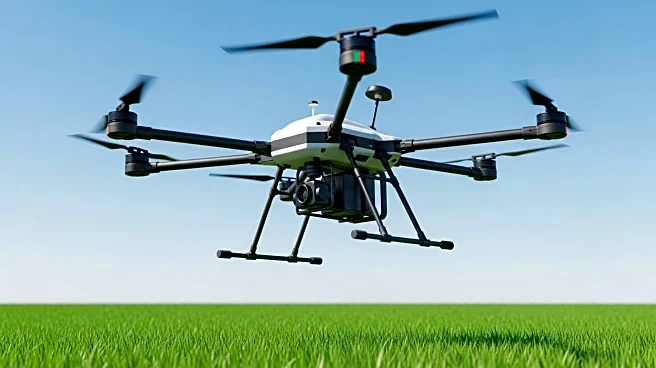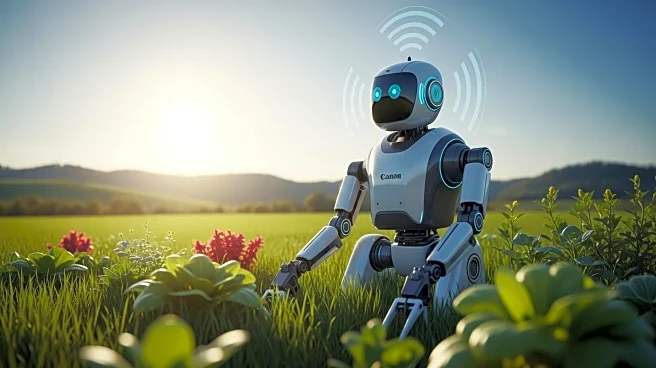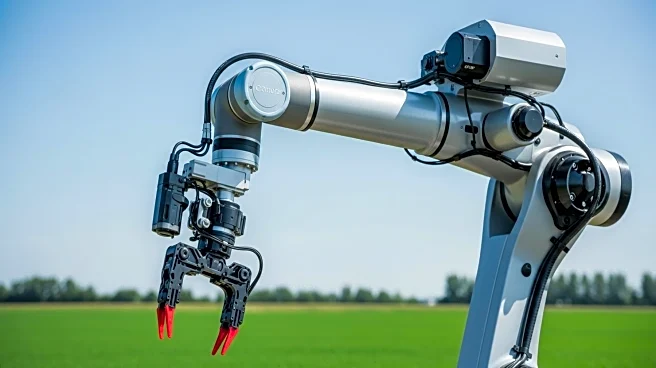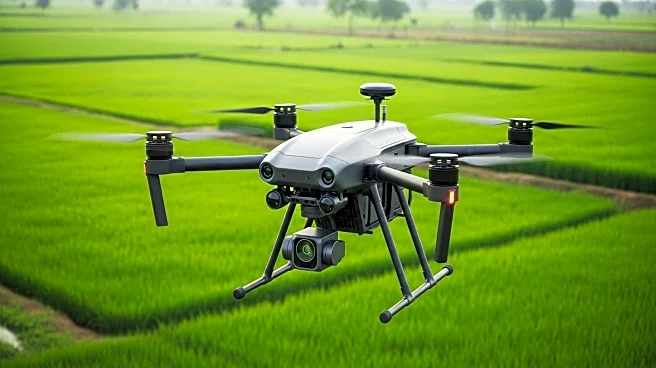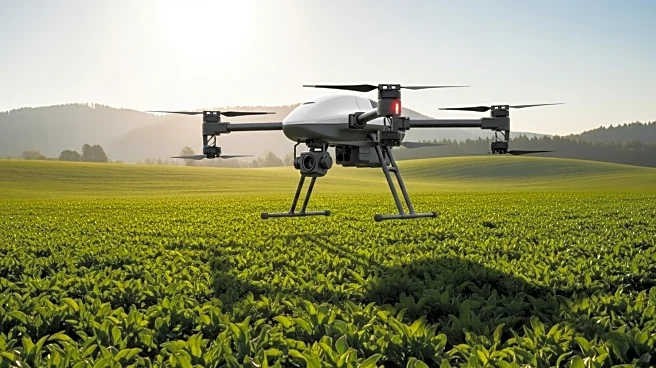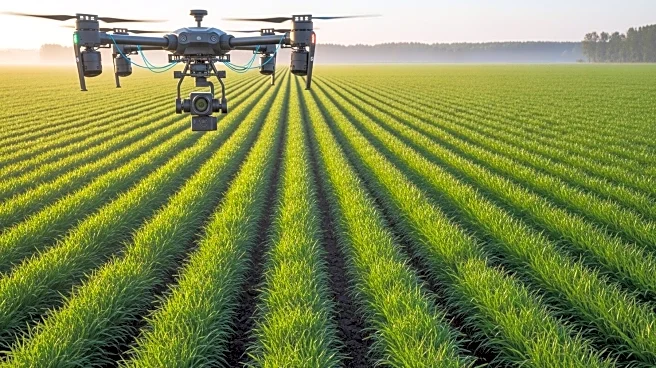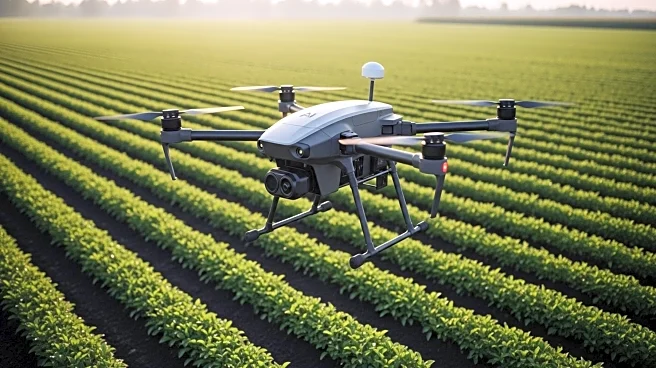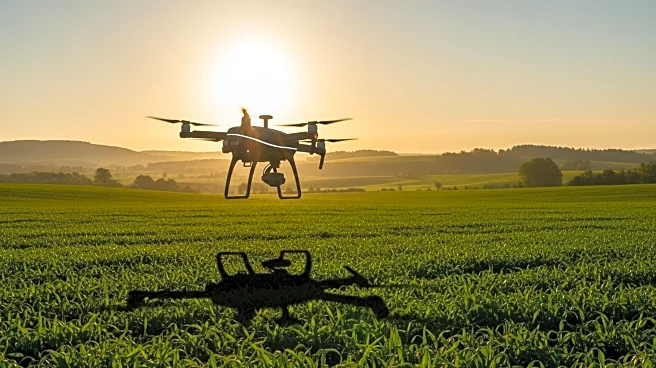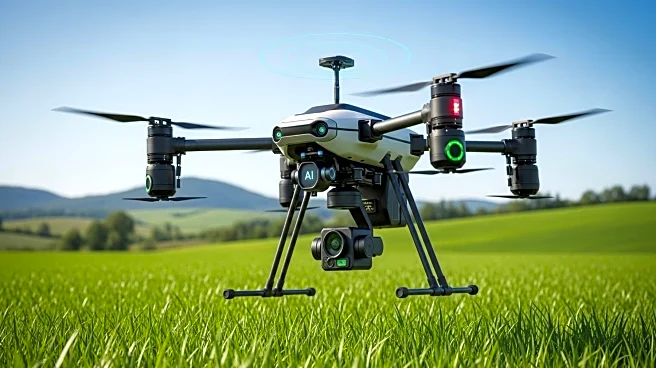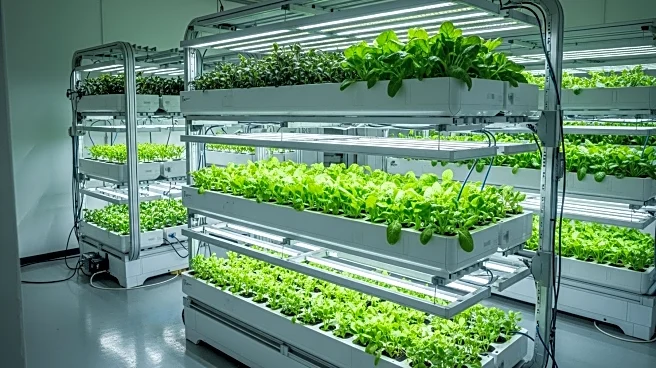What's Happening?
The global agricultural drone market is experiencing significant growth, with projections indicating it will reach USD 36,546.21 million by 2032, up from USD 2,943.23 million in 2024. This growth is driven by advancements in unmanned aerial vehicles (UAVs) used for crop monitoring, mapping, and precision farming. Drones equipped with high-resolution imaging and data analytics are helping farmers optimize irrigation, pest control, and yield estimation. The integration of AI and IoT technologies is transforming farming practices, with governments and agritech companies promoting drone-based solutions for sustainable agriculture. Innovations such as LiDAR, multispectral imaging, and real-time monitoring are enhancing productivity, while digital transformation reshapes the agricultural sector.
Why It's Important?
The expansion of the agricultural drone market is crucial for addressing global agricultural productivity challenges. By leveraging AI and robotics, farmers can achieve more efficient and sustainable farming practices, reducing chemical use and environmental impact. The ability to precisely monitor and manage crops can lead to increased yields and reduced costs, benefiting both farmers and consumers. As the market grows, it also presents opportunities for technological innovation and investment, potentially leading to new business models and economic growth in the agritech sector. The adoption of drone technology in agriculture could also contribute to food security by improving crop management and reducing waste.
What's Next?
The agricultural drone market is expected to continue its rapid expansion, with advancements in drone technology and AI integration driving further growth. Regulatory frameworks are evolving to allow fully autonomous drone operations, which could increase efficiency and coverage. The integration of drones with farm management software will provide farmers with comprehensive data for decision-making. As the market develops, stakeholders such as agritech companies, investors, and policymakers will likely focus on enhancing drone capabilities and expanding their applications in agriculture. Continued innovation in drone technology could lead to new solutions for challenges such as pollination, livestock monitoring, and frost prevention.
Beyond the Headlines
The rise of agricultural drones highlights broader trends in digital transformation and automation within the farming industry. Ethical considerations regarding data privacy and the environmental impact of drone use may emerge as the technology becomes more widespread. Additionally, the shift towards precision agriculture could influence cultural practices in farming, as traditional methods are supplemented or replaced by technology-driven approaches. Long-term, the integration of drones into agriculture could lead to shifts in labor dynamics, with a potential reduction in manual labor and an increased demand for tech-savvy workers.

